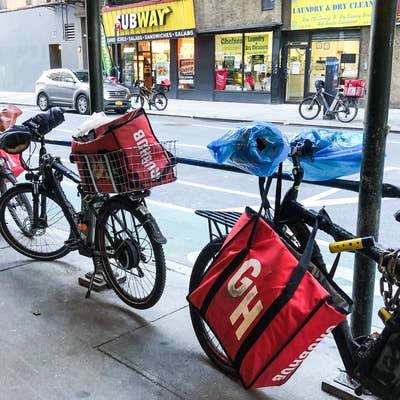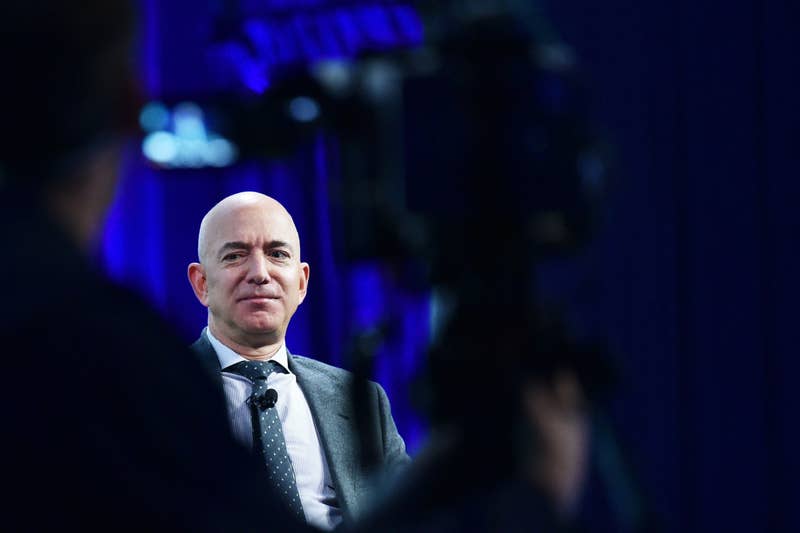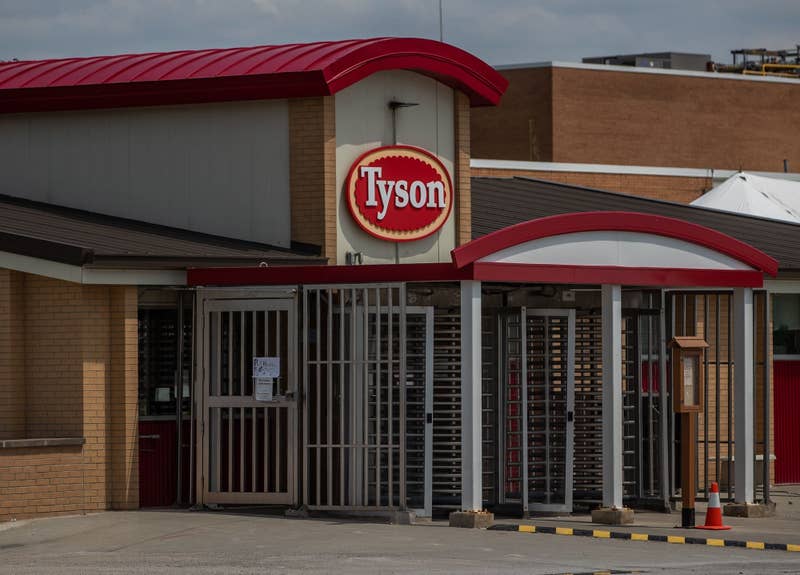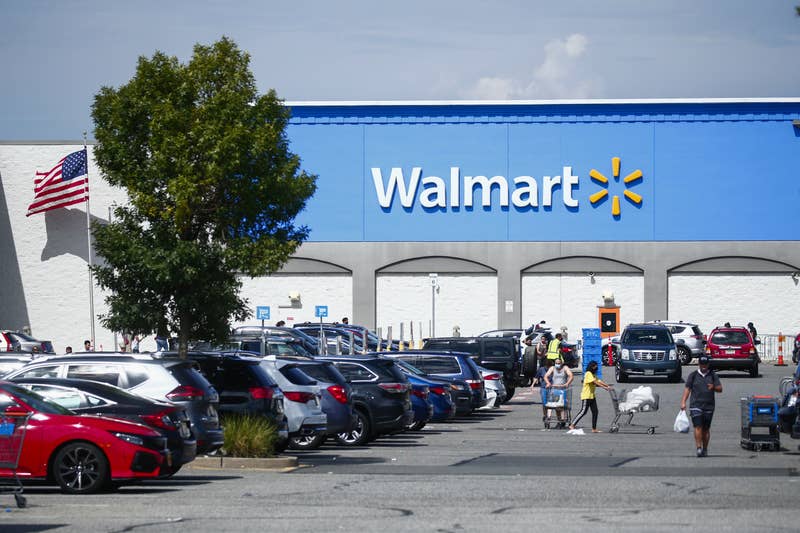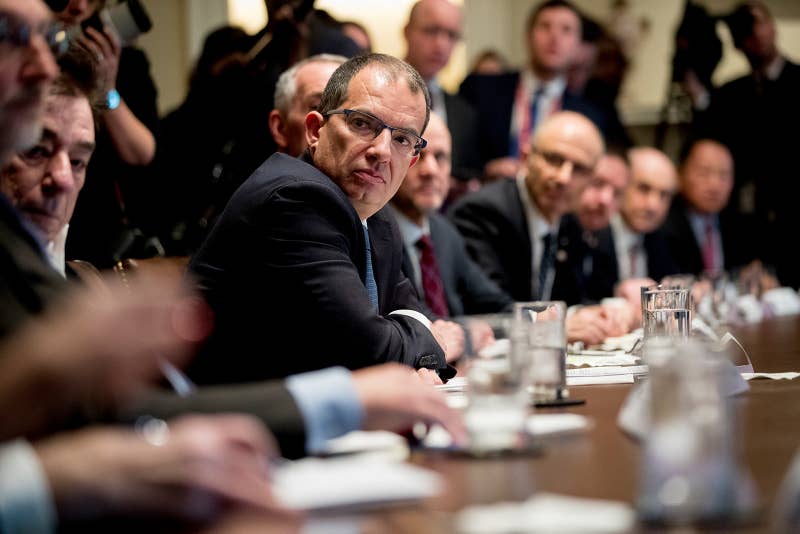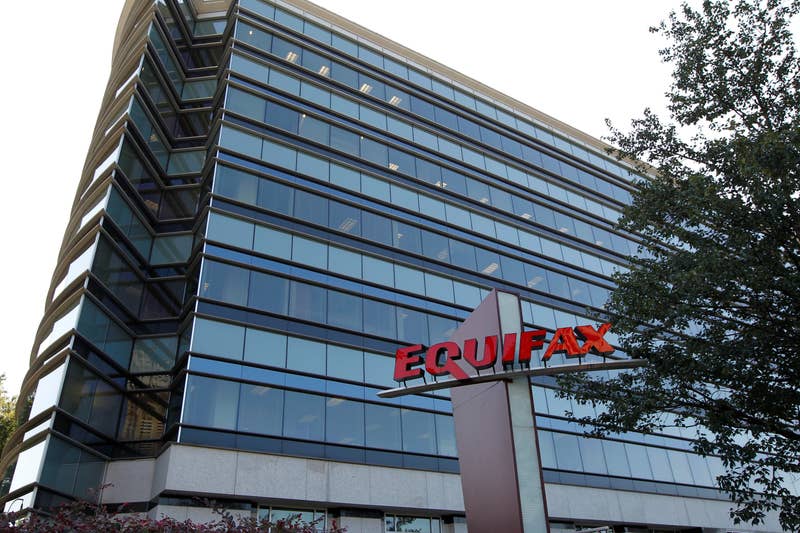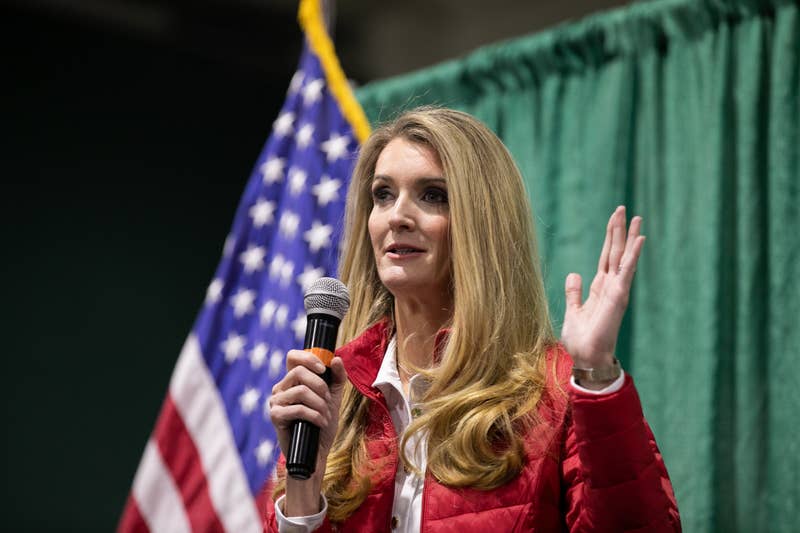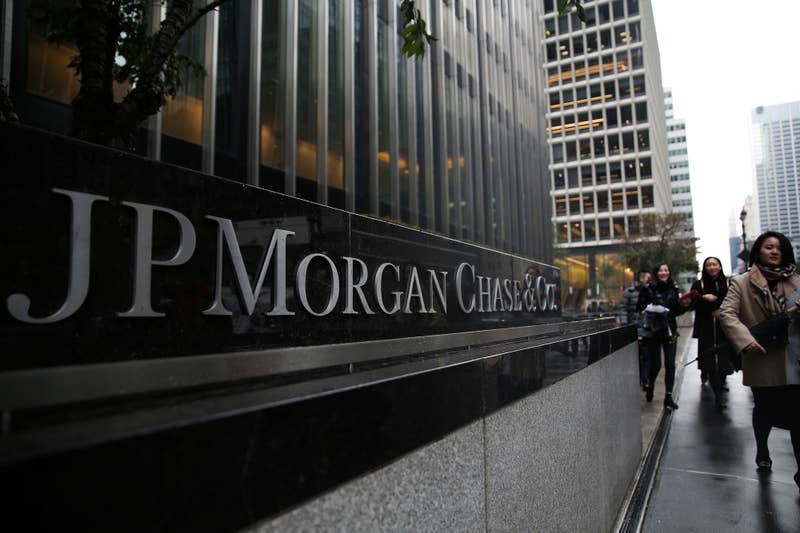PRISON NATION USA
States Say They’re Decarcerating, Yet 1 in 5 Prisoners Has Had COVID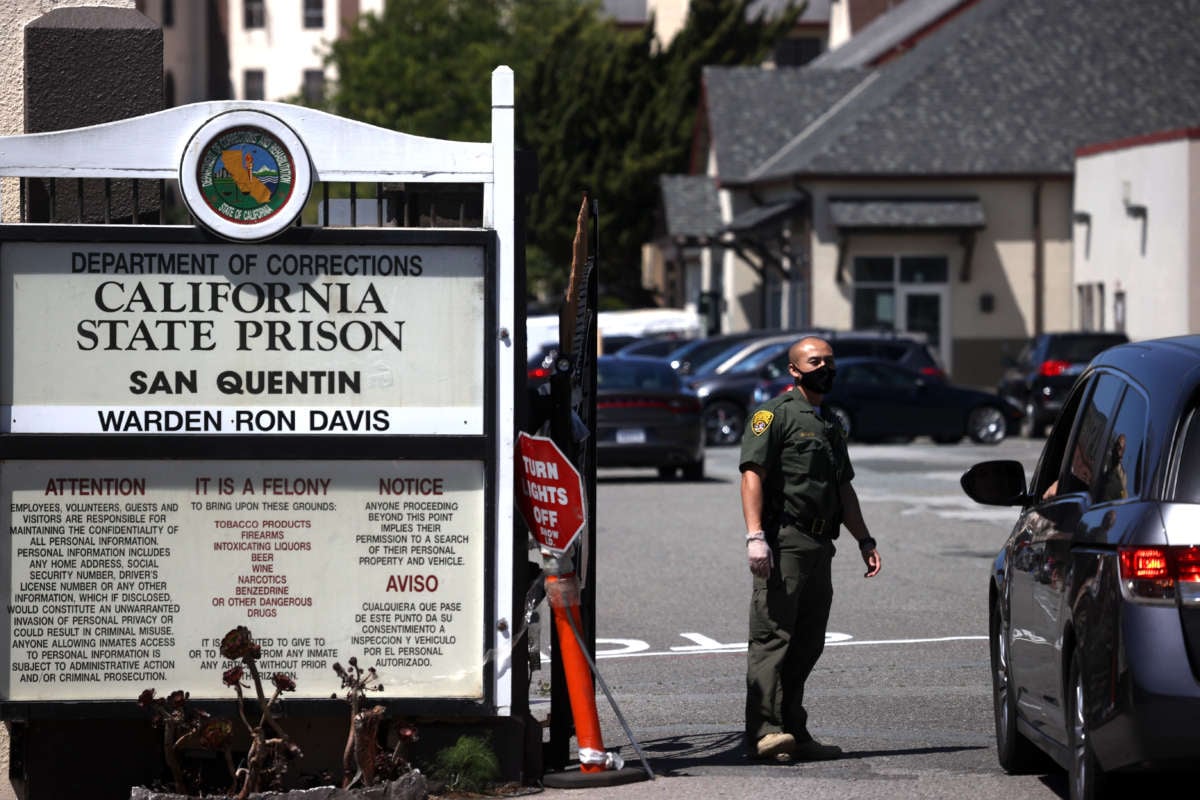

A California Department of Corrections and Rehabilitation (CDCR) officer wears a protective mask as he stands guard at the front gate of San Quentin State Prison on June 29, 2020, in San Quentin, California. JUSTIN SULLIVAN / GETTY IMAGES
“Some of us wear masks even in our beds, but it feels futile,” said Sarah Jo Pender, incarcerated at the Rockville Correctional Facility, one of Indiana’s three women’s prisons. “There is little to do except watch the infection spread and wait my turn to suffer.” These measures did not prevent Pender and six of the 14 women in her cell from contracting COVID-19. They were not alone: As of December 18, the prison had tested 1,050 women; 302 (nearly 29 percent) tested positive.
On December 10, nearly nine months after the virus exploded across the United States, prisons reported 276,235 confirmed COVID cases, a rate more than four times as high as that among the general public. One in five prisoners has had COVID-19. Prisons have had at least 1,738 deaths from COVID. (These figures only include state and federal prisons, not jails, immigration prisons or juvenile detention.) Prisons have had at least 1,647 deaths from COVID.
And the impacts of incarceration-related COVID outbreaks extend beyond the jail walls: Guards and others traveling in and out of prisons have contributed to community spread. A new report by the Prison Policy Initiative estimated that, in the summer alone, prisons and jails contributed to more than half a million, or roughly 13 percent of, additional COVID-19 cases nationwide.
From the start of the pandemic, public health and medical officials warned that incarcerated people were uniquely vulnerable to COVID and its most severe complications. Many people enter prison with a raft of preexisting health conditions. Inside the prison, they are unable to physically distance from each other or adhere to other Centers for Disease Control and Prevention guidelines, such as frequent hand washing, using alcohol-based sanitizers or wearing masks. Many prisons did not issue masks for weeks, forcing incarcerated people to risk sanctions when they improvised masks from other pieces of clothing.
Experts’ predictions quickly came true as several jails and prisons emerged as the nation’s top hotspots. Family members and advocates, ranging from prison reformers to prison abolitionists, demanded decarceration, or the mass release of people from jails and prisons, to stem the spread.
The response varied from state to state and even county to county, but some jails and prisons did make real population reductions. Now, as a far worse second wave washes over the country, some jurisdictions are beginning to reverse their reductions.
Did Decarceration Happen?
Some jails, such as Chicago’s Cook County Jail, allowed some people awaiting trial to swap overcrowded dorms for electronic monitors (though the county quickly ran out of monitors, forcing people to remain in jail). Other jurisdictions such as Palm Beach, Florida, firmly resisted decarceration, declaring that they would not release anyone without a court order. Across the country, jail populations decreased from 738,400 in December 2018 to 575,952 in July 2020.“There is little to do except watch the infection spread and wait my turn to suffer.”
The response also varied among prison systems. Federal prisons decreased their populations by less than 20,000 — from 175,315 in March 2020 to 156,968 in August. Even these 20,000 releases are not all responses to COVID. Nazgol Ghandnoosh, senior research analyst at the Sentencing Project, noted that it is unknown what percentage were those already scheduled for release regardless of the pandemic. It is also unknown how these numbers are affected by a reduced intake of people from jails during the pandemic. In addition, as reported earlier, many people continue to languish in federal prisons across the country despite memos from then-Attorney General William Barr directing that people vulnerable to COVID complications be released from prison to home confinement.
On the state level, nearly 53,000 people were released from state prisons between December 31, 2019, and May 1, 2020. Again, it is not known how many of these numbers are from COVID-based early release and how many would have been released regardless. California’s prison system has boasted that it has reduced its prison population by 22,148 since March 11, largely by expediting the release of those scheduled to leave prison within months.
Michigan increased the number of people approved for parole by approximately 200 per week to reduce prison density. In June, its Department of Corrections reported that its prison population had decreased by 1,958 people (5 percent) since March 20. New York’s prison system allowed 3,145 people to be released early, a decrease of approximately 8.8 percent. New Jersey released more than 2,200 people, or 16 percent of its adult prison population, who had less than a year remaining on their prison sentences.
These decreases are not necessarily extraordinary, noted Ghandnoosh, especially when examined in the context of the roughly 600,000 people typically released from prisons annually.
Meanwhile, some states such as Indiana have resisted implementing early release policies.
Furthermore, population reductions have not been enough to stem the spread. California’s prisons remain at 105 percent capacity; of its 92,170 prisoners, 5,343 have active COVID cases and 93 have died. New York’s prisons reported 120 new cases in early December, bringing its total to 1,959 cases among its 35,353 state prisoners.
In Michigan, the numbers are even more stunning. With the help of the state’s National Guard, the Department of Corrections tested all 34,000 remaining prisoners. As of December 17, 19,710 have tested positive (with 6,727 active cases) and 104 have died, a dramatic increase from the 3,944 cases and 68 deaths in June. Even more alarming, 115 people who had previously tested positive for COVID have tested positive for a second time. At its Gus Harrison Correctional Facility, over 72 percent (or 1,423) of the 1,955 incarcerated men tested positive; six have died.
A Reversal in Reductions — and a Surge in COVID
As the pandemic drags on and the threat of COVID transmission becomes a normalized reality, incarceration reductions are reversing. From March to July, the majority of 514 jails surveyed by the Prison Policy Initiative had reduced the number of people behind bars by an average of 26 percent. Since July, however, 77 percent of these same jails saw increases in their populations, a trend, says the Prison Policy Initiative, “suggesting that the early reforms instituted to mitigate COVID-19 have largely been abandoned.” Some, such as the jails in Cook County, Illinois, and Jefferson, Louisiana, have managed to slightly surpass their pre-pandemic (February) populations. Others have seen dramatic increases — St. Lucie, Florida, for example jailed 808 people in February; throughout the pandemic, it has steadily increased its jail population to 1,332 people as of December 4.“Our rooms are fenced-in cubicles with 14 to 16 women per room,” she explained. “We live in bunk beds separated by three feet. Every 136 women share two bathrooms.”
State prison populations are also beginning to climb again. North Dakota’s prison population, which decreased by 19 percent between January and May 2020, is starting to inch up. From October 8 to November 19, the state increased its prison population by 3 percent. By Halloween, its prisons saw a surge in COVID: 66 of its 600 incarcerated people as well as 21 of approximately 200 staff members tested positive.
Prison intakes, previously halted in many states to prevent COVID exposure, have restarted. Each new arrival brings the potential for COVID to enter — and explode throughout the prison. New arrivals are supposed to undergo 14 days of quarantine before mixing with the general population, but this is not always the case. In New York, for instance, when prison officials first converted Adirondack Correctional Facility into a prison for men ages 65 and older, men reported not being tested or quarantined upon arrival.
Quarantine also didn’t stop COVID from exploding at Rockville, the Indiana prison where Sarah Jo Pender is incarcerated. “Our rooms are fenced-in cubicles with 14 to 16 women per room,” she explained. “We live in bunk beds separated by three feet. Every 136 women share two bathrooms.”
Rockville did not experience a COVID outbreak in the spring or summer. That changed in the fall when a few women tested positive. In response, the prison quarantined the women and their roommates in the prison gym. Then, a mental health counselor tested positive. The prison quarantined the counselor’s patients in the prison’s education building. The patients’ roommates were locked in their rooms to quarantine. “The administration requires masks to be worn when we exit our rooms, but since we are locked in our rooms all together, that really doesn’t seem like an effective tactic to prevent contagion,” Pender said.
In addition, all 136 women in one housing unit share two bathrooms. The prison continued to allow the quarantined women to use the same bathrooms as the women who were not under quarantine. Cases began to rise exponentially. “Two cooks and a food line worker tested positive,” recalled Pender. “Then a maintenance worker. Then several women in one room. Now, over half the prison is quarantined.” Still, testing was not universal. Only those who exhibit symptoms and report these symptoms to medical staff were tested.
As of December 8, 225 (nearly 24 percent) of the prison’s 954 women tested were positive. “Now,” reported Pender, “when a person tests positive, the policy is to lock the door, confining the sick person(s) together with her roommates.” She noted that, in one room, 11 of 14 women tested positive. All 14 were locked in the room under isolation. “The other three are simply shut in there and fervently praying for protection.” Similarly, when Pender and six of her roommates tested positive, the five who did not were not moved from their shared cell.
In an email to Truthout, David Bursten, chief communications officer for the Indiana Department of Correction, stated that those found to have symptoms or were exposed to a known COVID-19 person are immediately tested and screened by medical staff and receive care as needed.“The women who get sick after being quarantined do not report their symptoms, because if they do, and test positive, then the 14-day period starts over for the whole room.”
In response to Pender’s allegations, Bursten wrote, “For prisons that have dormitory-style housing, other dorms or spaces may be used for separation if available and appropriate. In some instances, incarcerated individuals who test positive have been temporarily housed with those who are negative while we have readied additional space at the facility in order to separate them. That is why we require that they wear face coverings, socially distance and practice frequent hand washing.”
“I tested positive on the 10th. Here it is, 11 days later, and neither me nor any of the dozens of women who tested positive on this section of the dorm were separated,” Pender reminded Truthout on December 21. “116 of 136 they locked in our rooms, the sick with the healthy. Four went to the infirmary. The other 16 are in one room where no one was tested, and no one reported symptoms.”
Now, the prison has started to isolate those who newly test positive into the gym, then lock down their roommates. But, added Pender, those roommates are not tested unless they exhibit symptoms.
Pender has lost her sense of smell and, with very few exceptions, says everything tastes like cardboard and mudpies. She also has an intermittent fever, headaches, extreme fatigue and brain fog. Her roommates have varying degrees of the same symptoms.
Furthermore, Pender believes the number of COVID cases are higher than those reported. “The women who get sick after being quarantined do not report their symptoms, because if they do, and test positive, then the 14-day period starts over for the whole room. So there are a LOT of unreported positive cases here.”
The failure to meaningfully decarcerate jails and prisons has also led to increased cases in the community as staff travel between work and their home communities on a daily basis.Between California, Florida and Texas, mass incarceration contributed to a quarter million new COVID cases from May 1 to August 1.
Between California, Florida and Texas, mass incarceration contributed to a quarter million new COVID cases — or 20 percent of new cases in these states — from May 1 to August 1. Despite its much-touted release of 22,148 people from prisons, the Prison Policy Initiative estimated that California’s incarceration alone contributed 113,969 COVID cases (or 291 cases per 100,000 residents).
In Indiana, where Pender and many other women wear their masks to bed in a desperate bid to avoid COVID, the state’s insistence on keeping people in prison led to 6,879 additional cases (or nearly 104 per 100,000 residents). In Parke County, where Rockville is located, 28 percent of residents tested positive. (Twenty percent of Rockville staff also tested positive.)
In Michigan, mass incarceration led to an additional 4,787 COVID cases (or 48 per 100,000 residents) throughout the state.
That was what prompted residents of Adrian, Michigan, the town where the Gus Harrison prison is located, to join family members and advocates during their December 11 protest demanding the release of aging and medically vulnerable people.
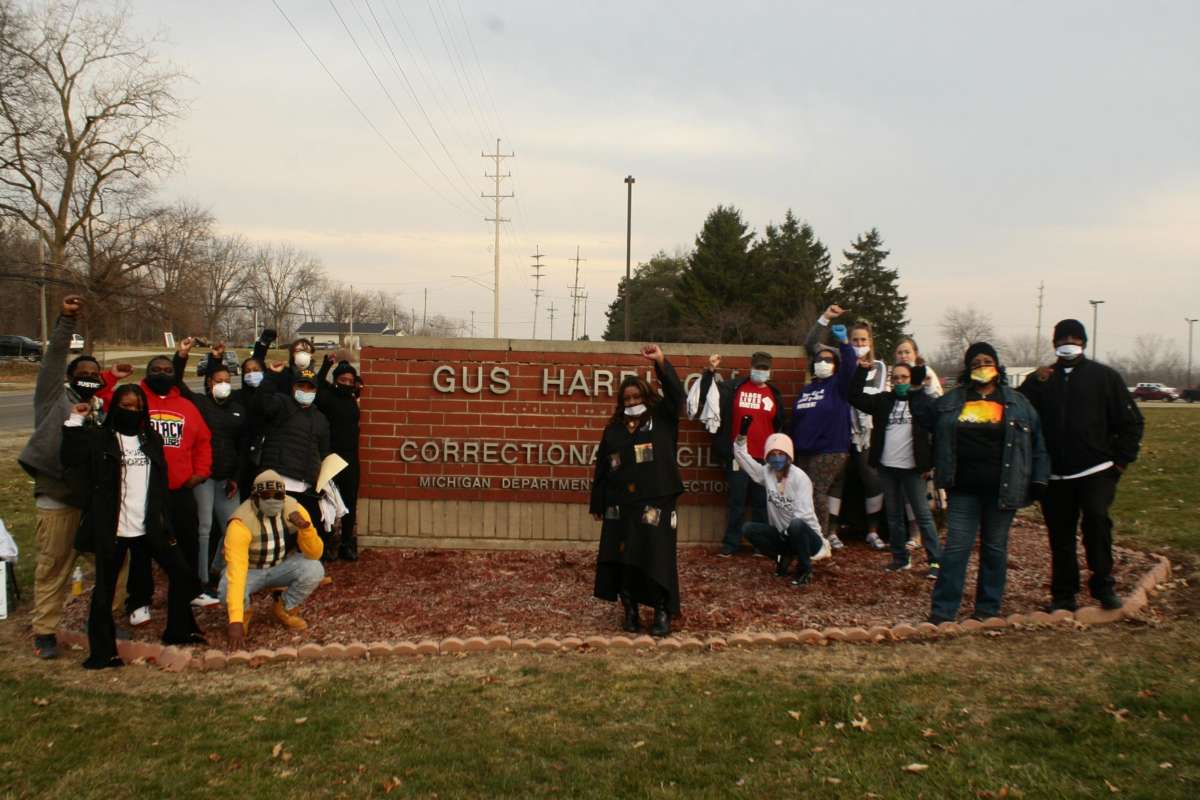
Residents of Adrian, Michigan, join family members and advocates demand the release of aging and medically vulnerable people on December 11, 2020.
COURTESY OF VICTORIA LAW
“They were worried,” Shawanna Vaughn, the rally organizer and director of Silent Cry, a nonprofit addressing the traumas of incarceration, told Truthout. “They thought that if people inside are infected, then they’ll be infected too. I explained that if incarcerated people get COVID, it comes from the staff so their community is already at risk.”
At the rally, advocates also learned that the men who had spoken out about COVID conditions had been placed in solitary confinement, a punitive form of isolation. After the rally, Vaughn spoke with others inside the prison. “They were excited,” she told Truthout. “Even though that [retaliation] is happening, nothing [advocacy-wise] was happening before.”
Now, she said, “People are asking, ‘What do we do now? Where do we go from here?’” Quoting Assata Shakur, she added, “We have nothing to lose but our chains.”
That’s not the mood among the women at Rockville. “The prison has essentially thrown up their hands and walked away from the problem for the moment,” said Pender. “I am sure that they are working on a better solution (at least, we hope so), but in the meantime, we see our neighbor get sick and we start worrying. Then they test positive, and we literally become trapped in the room with them. It’s like something out of a horror movie. In the beginning, I used to flippantly say that when the COVID finally comes here, the prison will just let us all get sick and die. I thought that I was just being dramatic, but it might have been more prescient than I know.”
“They were worried,” Shawanna Vaughn, the rally organizer and director of Silent Cry, a nonprofit addressing the traumas of incarceration, told Truthout. “They thought that if people inside are infected, then they’ll be infected too. I explained that if incarcerated people get COVID, it comes from the staff so their community is already at risk.”
At the rally, advocates also learned that the men who had spoken out about COVID conditions had been placed in solitary confinement, a punitive form of isolation. After the rally, Vaughn spoke with others inside the prison. “They were excited,” she told Truthout. “Even though that [retaliation] is happening, nothing [advocacy-wise] was happening before.”
Now, she said, “People are asking, ‘What do we do now? Where do we go from here?’” Quoting Assata Shakur, she added, “We have nothing to lose but our chains.”
That’s not the mood among the women at Rockville. “The prison has essentially thrown up their hands and walked away from the problem for the moment,” said Pender. “I am sure that they are working on a better solution (at least, we hope so), but in the meantime, we see our neighbor get sick and we start worrying. Then they test positive, and we literally become trapped in the room with them. It’s like something out of a horror movie. In the beginning, I used to flippantly say that when the COVID finally comes here, the prison will just let us all get sick and die. I thought that I was just being dramatic, but it might have been more prescient than I know.”






